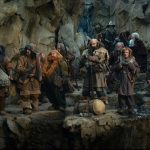The Guns of Navarone (1961)

Released in 1961 and directed by J. Lee Thompson, “The Guns of Navarone” stands as a classic war film that combines thrilling action with deep moral dilemmas. Set against the backdrop of World War II, the film adapts Alistair MacLean’s novel of the same name into a gripping tale of courage, sacrifice, and the struggle against overwhelming odds.
The narrative unfolds on the fictional Greek island of Navarone, where a strategic German fortress bristles with massive artillery guns that threaten Allied naval operations in the Aegean Sea. Tasked with a seemingly impossible mission to disable these guns are a diverse team of Allied commandos, each with their own expertise and personal motivations. The ensemble cast includes Gregory Peck as the resolute leader, Captain Mallory, Anthony Quinn as the Greek resistance fighter, Colonel Andrea Stavrou, and David Niven as the explosives expert, Corporal Miller.

From the outset, “The Guns of Navarone” captivates viewers with its breathtaking cinematography and sweeping vistas of the rugged Greek landscape. The stark contrast between the serene beauty of the island and the looming threat of the fortress underscores the high stakes of the mission. Director J. Lee Thompson’s command of scale and spectacle ensures that the action sequences, from perilous cliff climbs to intense firefights, are executed with thrilling precision and cinematic flair.
Central to the film’s narrative is the moral complexity faced by the commando team as they confront the realities of war. Captain Mallory and his comrades grapple not only with the physical challenges of their mission but also with ethical dilemmas that test their principles and resolve. The presence of civilians caught in the crossfire, the specter of betrayal within their ranks, and the personal sacrifices demanded by their mission all contribute to a narrative rich in tension and moral ambiguity.

Thematically, “The Guns of Navarone” explores the themes of heroism and sacrifice against the backdrop of war. Each member of the commando team, drawn from different backgrounds and nationalities, brings a unique perspective to the mission. Their camaraderie and conflicts, shaped by their shared sense of duty and individual convictions, add depth to their characters and resonate with themes of unity and resilience in the face of adversity.
The film’s screenplay, adapted from Alistair MacLean’s novel by screenwriters Carl Foreman and Michael Wilson, maintains a brisk pace while delving into the emotional complexities of its characters. Dialogue is sharp and memorable, infused with wit and gravitas that underscore the gravity of the team’s mission and the bonds forged in the crucible of war.

At its heart, “The Guns of Navarone” is a testament to the human spirit’s capacity for courage and self-sacrifice. As the commando team confronts overwhelming odds and unforeseen challenges, their journey becomes a stirring allegory for the resilience of the Allied forces during World War II. The film’s conclusion, with its moments of triumph and tragedy, resonates with a sense of poignancy and honor that lingers in the minds of viewers long after the credits roll.

In conclusion, “The Guns of Navarone” (1961) remains a timeless classic of the war film genre, celebrated for its compelling characters, thrilling action sequences, and profound exploration of moral complexity. Through J. Lee Thompson’s masterful direction and a stellar ensemble cast, the film continues to captivate audiences with its epic scope and enduring themes of heroism and sacrifice in the face of tyranny.











